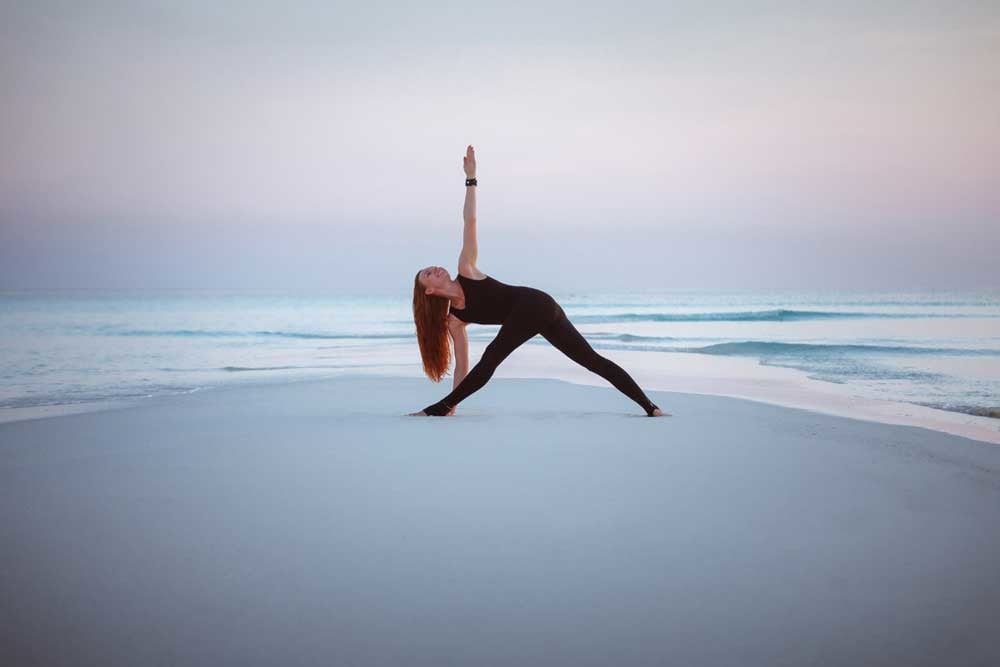What is Hatha Yoga?

Hatha yoga, what exactly is this? Is this a specific yoga style? What is the difference between Hatha yoga and other forms of yoga? What should you keep in mind of with this form of yoga? All questions that arise for many yogis when we talk about Hatha yoga. Because between all new (and old) yoga styles, Hatha yoga keeps popping up. We take away all the riddles around this form of yoga, so that you know exactly what to expect with Hatha yoga.
The origin of Hatha yoga
To properly understand Hatha yoga, we must first dive into the history of yoga. Hatha yoga is the most ancient yoga style and many yoga styles are derived from this yoga style. The special thing about this style is that it is an open stream without a founder or guru. This hardly ever happens anymore these days.
Hatha yoga used to be practiced by monks who needed mild physical exercise in addition to many meditations (and in preparation for meditation). You hold the yoga postures of Hatha yoga longer, without it becoming uncomfortable. Tensions disappear from the body, so you can sit longer and more comfortably during meditation. With this yoga style you are therefore preparing yourself for your meditation.
Hatha yoga is more than just moving
But Hatha yoga is more than just moving and performing the yoga postures well. Because it is the connection between body and mind that is very important within this style. Ha-Tha means sun and moon, which are seen as contradictions within yoga. The sun stands for action, fiery and masculine. The moon stands for internalization, calming and feminine. The characteristics of the sun and moon come together in Hatha.
In short, hatha yoga is the basis of sutra three and four within yoga. The sutras have been established for over two thousand years and you can see them as the golden rules within yoga. The rules you live by both physically and mentally. Sutra three is Asana (physical movement) and sutra four is Pranayama (breathing).
Breathing techniques with Hatha yoga
You bring together and create a connection between body and mind by combining yoga postures with breathing exercises and techniques (pranayama). The breathing techniques ensure that you are aware of your breathing and what it can mean for you. You also learn with this to:
Give energy
Streamline energy
Or to release energy
During Hatha yoga, for example, you learn the difference between abdominal and chest breathing. You also learn more about the levels of breath, how you control it and how you can pause in it. These breathing exercises and techniques ensure a good balance between our two brain halves.
The purpose of Hatha yoga
By practicing Hatha yoga you are training yourself to bring body and mind together. Inner peace, being in harmony with yourself, others and the world by coming and staying in contact with yourself. That is what you get from Hatha yoga. You become a powerful and stable person with this. Someone who is not easily out of balance and always keeps the goal in mind.
This is of course a wonderful goal and something that we should all want to pursue. Yet many people do not practice Hatha yoga for these reasons. In fact, they don’t know that this is the ultimate goal of Hatha yoga and that you can achieve it at all. Today, Hatha yoga is primarily known as a yoga style that:
Makes you more flexible
Teaches you how to deal with stress
Has a positive effect on your organs and nervous system
Also not wrong of course 😉
And if you regularly practice Hatha yoga without knowing the goals or your own goal, then you will automatically notice that you are more balanced in life.
Hatha yoga in the Netherlands
Hatha Yoga is one of the first yoga styles that was offered in the Netherlands in 1946. Although yoga is now more popular than ever, you can see that we have been practicing yoga for a very long time in our country.
If you practice Hatha yoga in a yoga studio, you will notice a different attitude of the yoga teacher in this yoga style. Unlike many other yoga styles, the teacher does not give tips or adjustments for the postures that you perform. The role of the teacher lies in giving direction and energy. The teacher does not teach you how to properly perform the postures, but encourages you to make things happen and to be a spectator.
This form of guidance is often not what we are used to and even what we would like. You want to know if you are doing the yoga postures right, right? But right or wrong are matters of the ego and you want to let go of this within Hatha yoga. Hatha yoga is all about you as a person, about letting go of your thoughts and making everything happen. If the yoga teacher is too present, you will be taken out of your concentration and you will be more concerned with other things than with yourself.
Hatha yoga and other yoga styles
Hatha yoga is more a trend on which many other yoga styles are based. This is not good or bad, because it is precisely within Hatha yoga that you let go of this ego issue. The big difference between Hatha yoga and other (flow) yoga styles is that with Hatha yoga you mainly turn inside. You can therefore easily and well practice this style at home. With other (flow) yoga styles you get a lot of strength and energy from the group by practicing the flow together.
Hatha yoga is seen as the basis of many other yoga styles. It is actually a bit like the mother in yoga. No matter how many children and grandchildren she has, the foundation ultimately lies with her.
[……]
